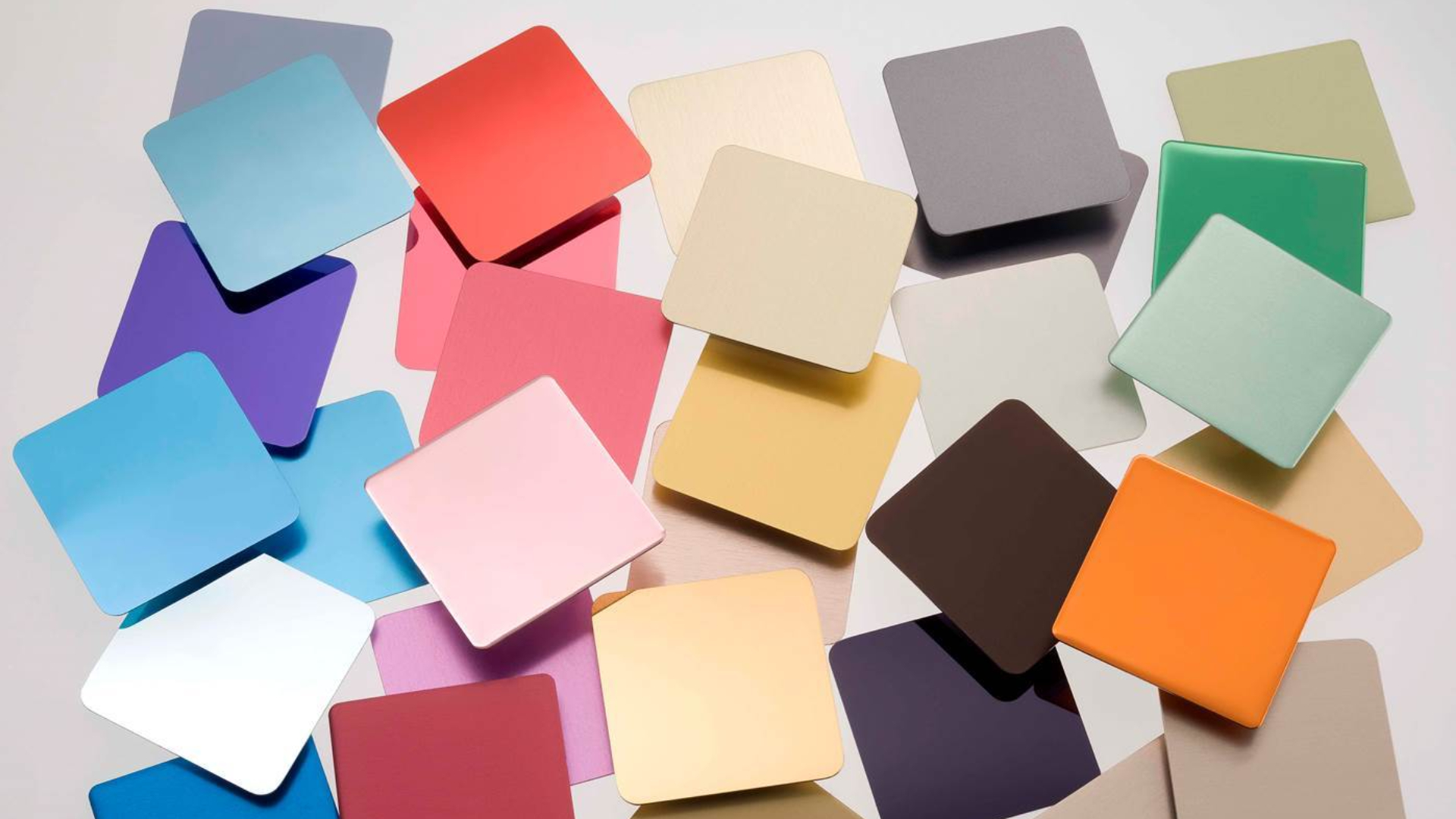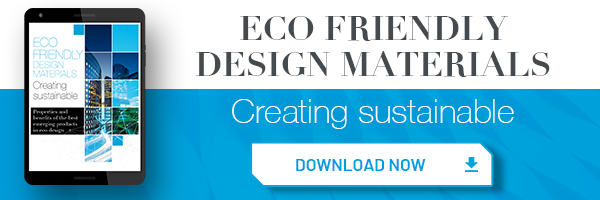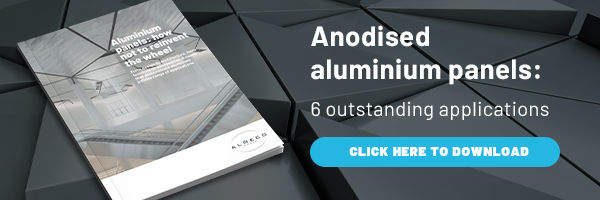A key feature of bare aluminium is its ability to undergo passivation. This is a natural process by which very thin outer layer of protection is spontaneously on the material surface and makes it less susceptible to corrosion. This characteristic can be exploited by technology known as anodisation: by means of a special electrolytic process, the oxide layer becomes thicker and harder and is more resistant to corrosion.
Almeco has been anodising aluminium for 50 years and the company continues to develop the technology to achieve a customised effect. Improvements in the anodisation technology allows Almeco to employ stricter control than in the past, achieving greater uniformity in the colour and appearance of the anodised aluminium.
The customisation of aluminium
Achieving a consistency in colour is one of the most challenging aspects of the anodisation process. Almeco regularly investigates new solutions to develop and improve the process. These include factors such as the shape of the electrodes, the agitation in the baths, and the use of special optical laboratory instruments.
“The customisation of aluminium is an aspect that we deal with frequently,” says Matteo Amadini, Almeco’s Production Manager. “The most important thing to do is to customise and recreate in a sustainable way particular colours and surfaces. We use instruments like colorimeters, spectrophotometers and reflectometers to achieve this, and they translate the optical aspect of the aluminium’s surface into a set of numbers.”
But as Amadini highlights, sometimes the human eye can see a slight difference in colour, even though the numbers of the instruments used as part of the colour process are correct. This can be a particular challenge when producing material for facades. If one sheet is slightly different when paired with other panels, these visual differences can be noted.
Almeco has a distinct advantage here because of the anodisation process employed. Extremely long aluminium coils are unrolled and anodised within dedicated production campaigns, in order to avoid significant variation in colour and surface structure. This means that Almeco maintains greater uniformity in colour and treatment.
Anodised aluminium: the challenges of customisation
The level of difficulty in a commission depends very much on the customer request. When customers want to change a specific aspect of the anodisation process the real challenge begins. For example, the customer may want a new matt anodised surface or a special shiny finish. If this is the case, to achieve either of these finishes requires closer investigation and testing in the laboratory.
According to Amadini, it is currently more common for customers to specify a matt finish for facades, which can be tricky to achieve as it involves complex etching treatment. Etching is a treatment Almeco carries out to the aluminium before anodising, and Amadini describes this as a controlled, generalised corrosion over the surface.
“The surface of the bare aluminium coming from the rolling mill is made duller by dipping in an aggressive chemical bath,” says Amadini. “Later in the process, the material is transferred to the anodising bath, where the matt finish is preserved, and finally it undergoes the sealing, where the condition is fixed. This results in a material which has a uniformly matt appearance and outstanding resistance to wear and corrosion.”
Whether a matt (etching process) or shiny (electro-brightening process) effect is required, the process involves changing the bath solution prior to anodisation.
Almeco’s eco-friendly commitment
Almeco’s commitment to sustainability is a key value in the organisation’s corporate philosophy.
Therefore, the Group keeps a keen eye on compliance with the current regulations and is always interested in investing in activities able to minimise the processes’ environmental impact. Among these, a constant monitoring of sensitive parameters and emissions, the recycling of waste and a continuous improvement of the sustainable use of natural resources lead Almeco to operate through an eco-friendly driven vision.
The consumption of water used for anodising deserves a special focus. In this specific case, a new process called “zero waste” involves purifying wastewater to use it again in a new process, creating this way a virtuous cycle.
Almeco has also enhanced the control of consumption thanks to energy self-production: a goal achieved through photovoltaic panels and a co-generator (CHP) that turns the heat generated by gas production into electricity.


